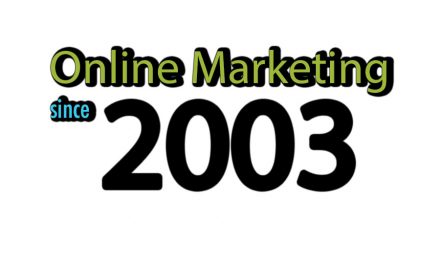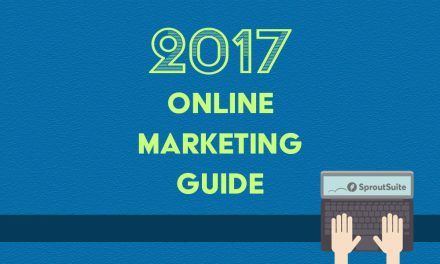January. In front of us, a blank canvas of over 300 days to create all the marketing and expansion that we ever wished for! And that’s what I wish for you.
I decided to start the guide with an issue having very little to do with the “how-to’s” of online marketing. Yep. I decided to undercut and cover something really basic: goals! What I’m offering here is just a direct communication to you as if we were sitting at a cafe chatting about life and, well, marketing.
Setting up business goals first
Before we start diving into the vastness of the virtual world, I would say the first thing we need to have are business goals. I recommend setting your business goals high. Think about where you’d like your business to be at by the end of the year.
As you start setting up goals that canvas quickly starts to fill up and darn, before you know it there may be more goals on it than you could digest before the year end. I’d say that’s a great problem to have.
Then, setting up online goals
Setting your online goals is no different!
Scenario: “Before the end of the year I want 250 new articles on the site, 52 new corporate videos on social media, I want to redesign the site, I want to start a podcast, I want to send a weekly newsletter and increase my list to 150,000 subscribers, I want to spend $1,500 every week on PPC, I want to take my brand to the next level, etc.” I’ve been in that situation several times myself.
I’ve noticed that online goals will more easily be achieved to the degree that the business goals are made clear and it’s usually not the reverse. Both will sync better. Flow better.
That’s why when I work with my clients I always try to dig deep into their business/brand mission, message and goals. Where the company is coming from and where they want to go.
Here are just a very few examples of online goals:
- 5X my number of customers coming from online efforts
- 10,000 people on our email lists who are receiving regular newsletters and updates from us.
- Increase our active paying members to 3,000
- Broader online awareness of our business/brand
- An increased presence on major channels (such as Google, Youtube, Facebook, Instagram, etc)
These goals are all measurable but of course they should be as precise as you wish them to be. These are just some examples. There are thousands of online goals. They will be different from one company to the other.
Keeping track of goals with statistics
As an executive, I recommend keeping track and have a good knowledge of at least some of the most important stats:
- Number of people that contacted us through phone, through forms, through social media. I would call those Reaches. I’m not referring to someone who shared or commented on some posts you published but actually someone reaching out for the service/product.
- Number of sales generated through online efforts (how they came about and from where)
- Conversion rate (simply explained: how many people buy or reach per 100 visits)
I like to think of conversion rate as one of the most senior online statistic one could keep track of. A conversion = a sale or a reach. Converting or changing someone from the condition of being a visitor or potential customer to an actual customer or subscriber.
With today’s technology, there are so many other statistics that one can track and learn how to read. Since this guide is not geared toward full-time online marketers, I just wanted to focus on the above statistics for the moment.
Discovering new online channels
As you start looking around, noticing what your competitors are doing online or simply stumbling across a new popular channel of activity you may again want to expand your goals. That’s one of the fun aspects of the internet, discovering what many other people are doing.
When this happens and you say to yourself, “Golly, I must now also open up this channel of activity,” I recommend one main thing: Make very sure to not drop what your company was already successfully doing online. When and how to open up new channels is another question entirely, but if you decide to move forward, I recommend you find ways to implement these new goals all the while keeping close monitoring of and maintaining what was already successfully bringing in business.
I have found that this rule works really well for me in helping clients improve their statistics.
Conclusion
Set up business goals first and then plan out the online goals and strategies.
Keep track of your statistics and find out what improved/worsened them. When and how to keep statistics varies from business to business but be constant.
Continue those online actions that are creating results and find ways to improve them.
On these words, I wish you happy marketing throughout the whole year!
Next, in the February issue I will be covering some of the basic online marketing terms and actions a business should know and take.
🙂
Patrick
Check my very brief 2016 online marketing summary.
See all of the 2017 Marketing Guide topics.





